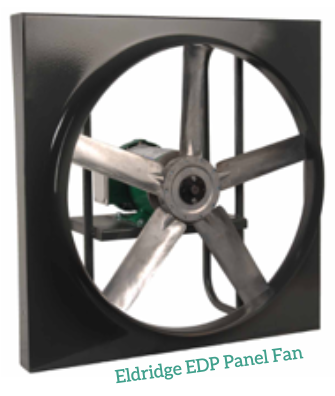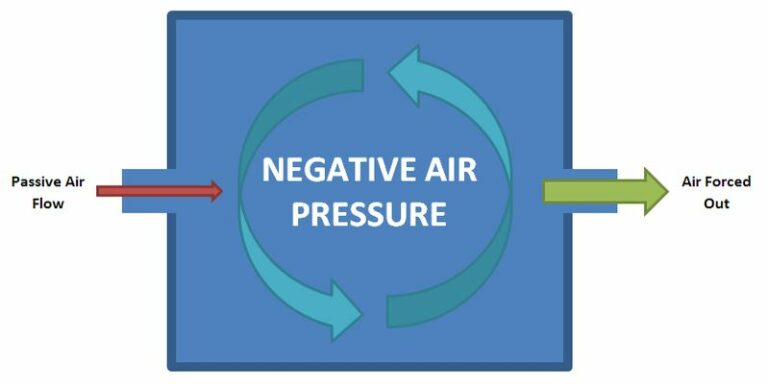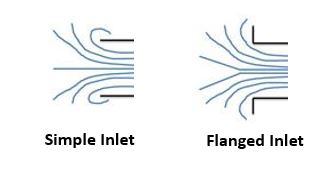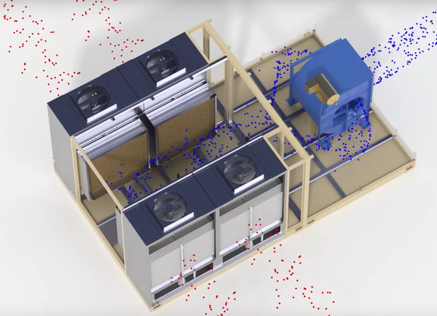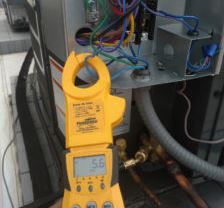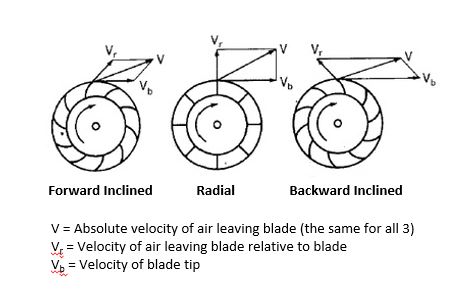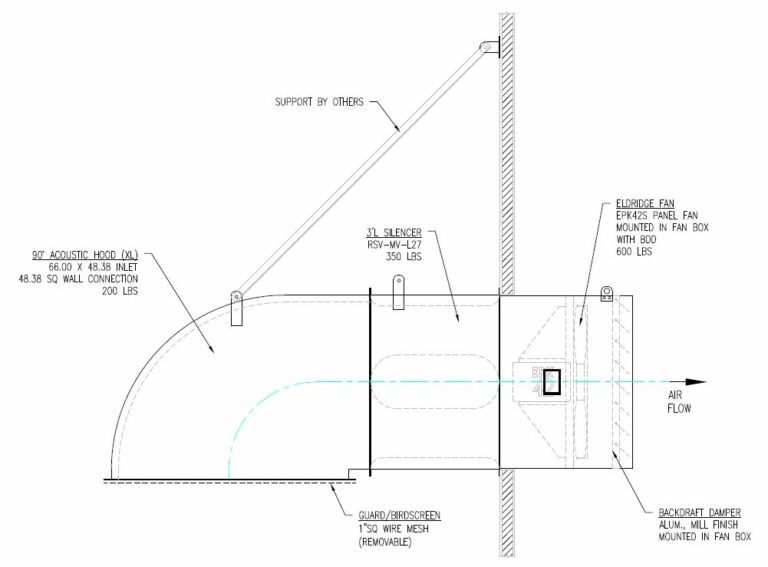Archives: Blogs
- Clayton Settle
When replacing general ventilation fans, customers often ask if the replacement fans can provide more airflow without increasing the fan size. Before providing the customer with an answer, we will need to assess their existing fans and evaluate the options for adding more airflow. In this article, I’ll discuss the options for increasing airflow utilizing …
- Josh Janecek
One of the ventilation system design principles for an industrial facility is to determine the amount of air flow needed to remove internal heat load. When the solar heat load is the only heat load, the activities inside or the purpose of the facility will determine what is an appropriate air change rate. But what …
- Ed Neese
When designing an industrial ventilation system, an important design criterion is determining whether the facility requires a positive or negative pressure environment to protect people, products, and processes. In this week’s blog I’ll discuss the benefits of both, the factors that should be considered, and how the ventilation equipment should be sized to achieve the …
- Fred Mott
Selecting the right filter to go with your silencer application requires understanding all of the options. There are trade-offs between cost, efficiency, durability, and size that really need to be thought through before selecting a filter-silencer or filter housing. In this week’s blog, I’ll go through the thought process that we use when we are …
- Ed Neese
Industrial fans are selected on the basis of delivering a required volume of air against the system total static pressure. But what amount of static pressure should be added to the system total static pressure for the fan itself? In this week’s blog, I’ll discuss the three types of pressure losses, frictional, dynamic and component, …
- Ed Neese
When the summer heat causes a dangerous increase in temperature inside a building, worker productivity goes down and injury risk goes up. Both problems can be mitigated by investing in a ventilation system upgrade. However, there is a certain order to improving a ventilation system where all of the components are working together to deliver …
- Ed Neese
The summer heat is not too far off. Doing a springtime tune-up on your ventilation system will ensure that there is a successful environment in your facility where your employees are healthy, safe, and productive when the temperature heats up. Below are a few suggestions to make sure that your ventilation system is ready for …
- Ed Neese
Centrifugal fans or blowers have a wide variety of process air applications. When selecting a centrifugal fan wheel for a particular application, here are three most common types to choose from: Forward Inclined Backward Inclined Radial In this week’s blog, I will discuss the characteristics of each type of wheel and the applications for …
- Ed Neese
In the second part of this three part series, I discussed the fluid flow analysis software and the three step process that we use to build models. In the third and final part, I’ll go through an actual ventilation system design project that we modeled in the FFA software. Example Project The ventilation system that …
Using Fluid Flow Analysis Part 3: Example Project Read More »

